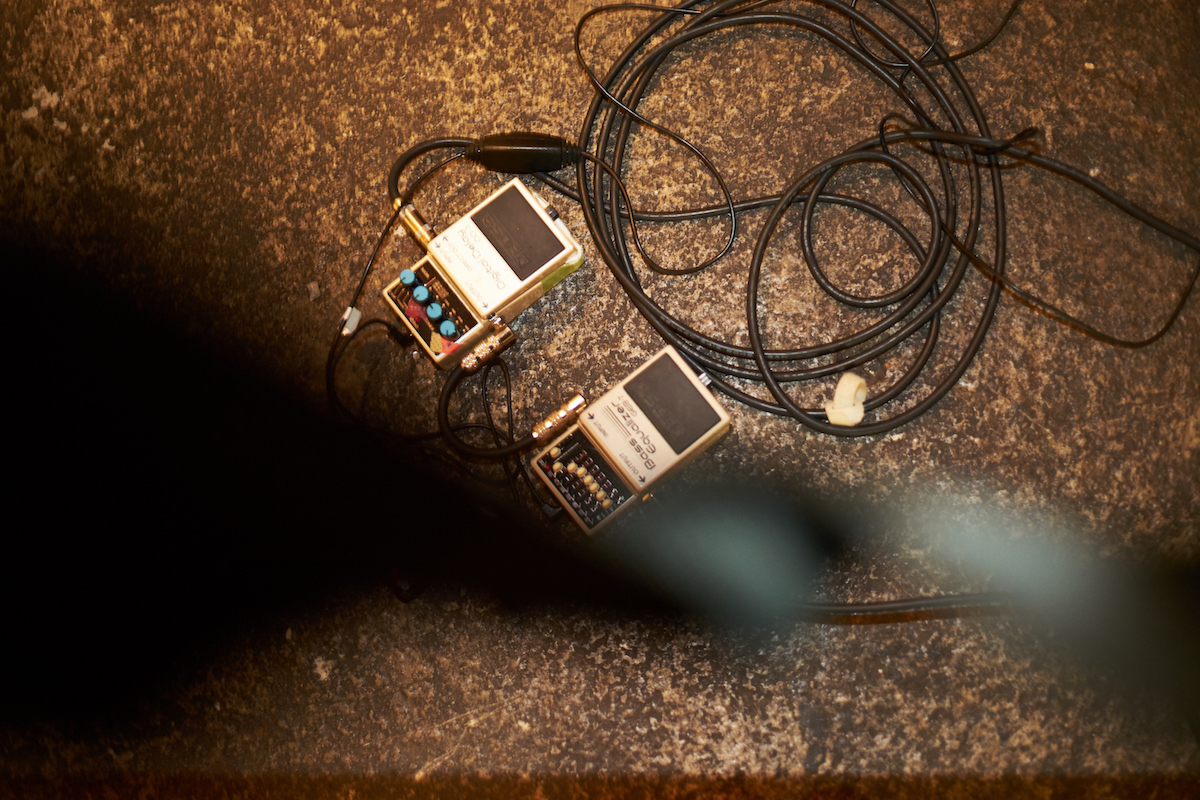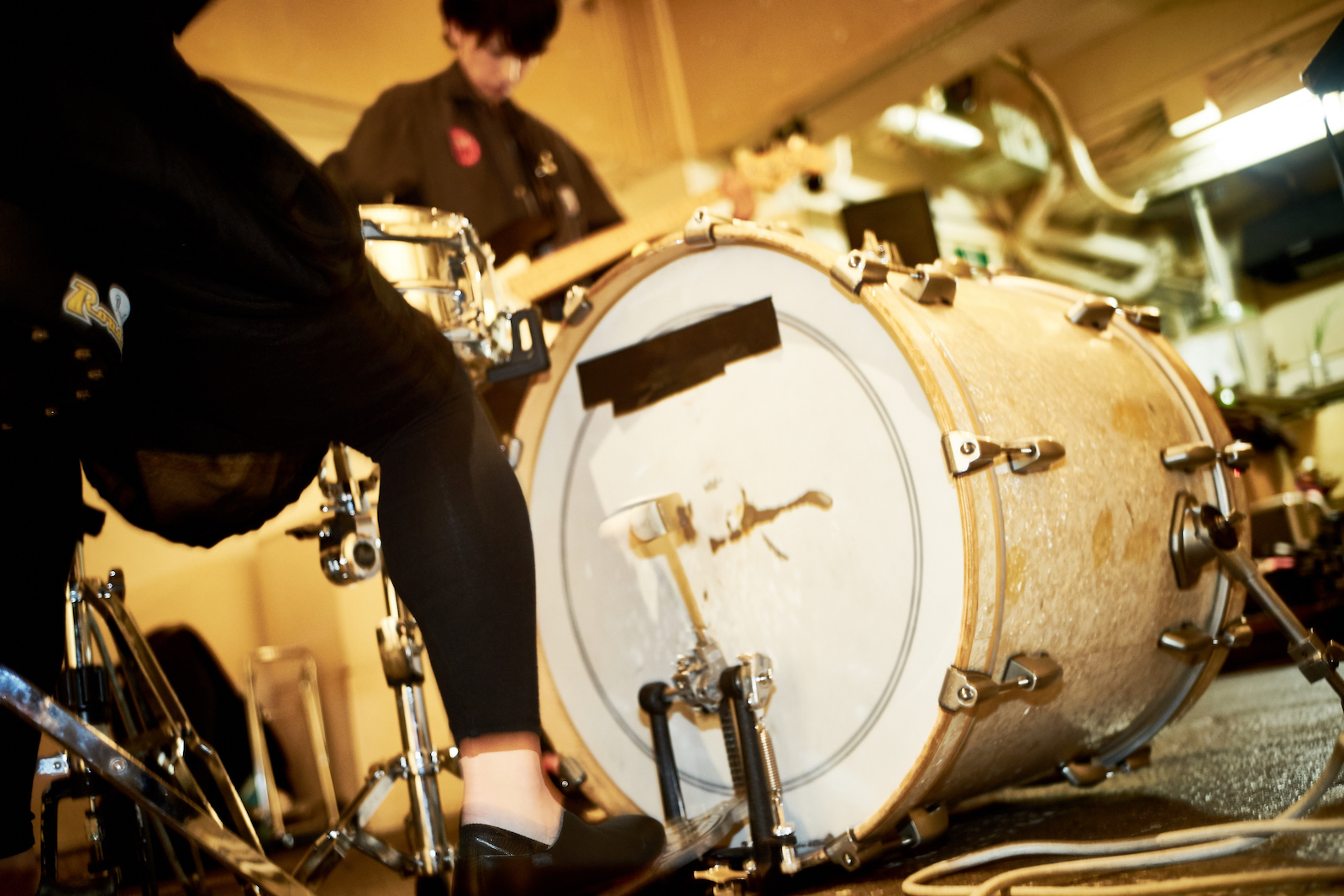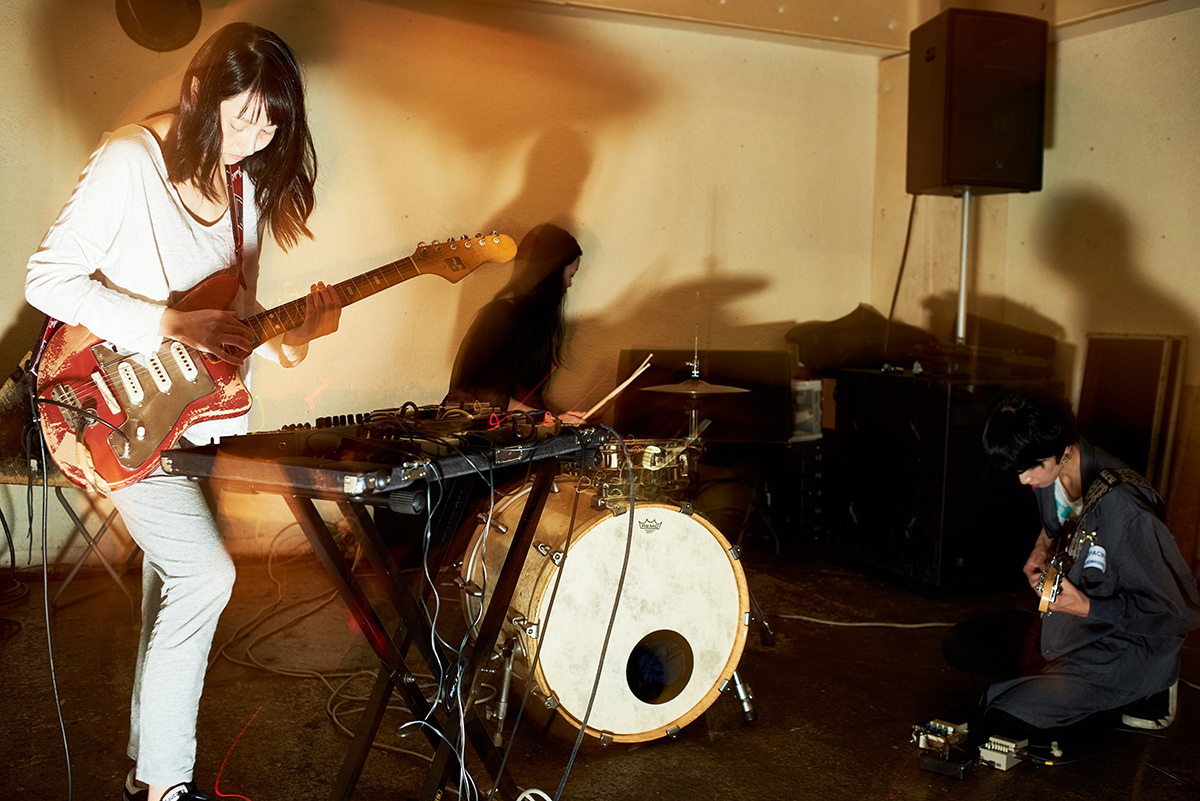Nisennenmondai’s loud, unrefined noise and repetitive beats stand in complete contrast to the usual popular image of girls bands from Japan. Having garnered a steady stream of hardcore music followers, the instrumental trio — composed of guitarist Masako Takada, bassist Yuri Zaikawa, and drummer Sayaka Himeno — has attracted not just local fans, but ardent supporters from all over the world. We spoke to them about where it all began and what’s in store next for the three bandmates, musicians, and best friends.

Why did you decide to form Nisennenmondai?
Zaikawa: We met and formed in 1999 when we were all in the same music club at university. When we were thinking about what to name the band, another friend in the same club suggested “Nisennenmondai” (which translates as Y2K Bug), which seemed topical at the time. We didn’t think too deeply about it, but it struck a chord with all three of us, and so we decided to make it our band name. We’ve been an instrumental band ever since we first started.
How has your musical style evolved since then?
Takada: In the beginning, we’d often watch a really great noise band at our music club. That was the first time we’d heard noise, too. Hearing it made us think, “Hey, we could do that,” and it led to the three of us going to the studio.
Himeno: It wasn’t like we heard something and thought, “This is the sound we want!” Instead, our initial thought was that we could probably do something similar. We were doing it just for fun in the first few years, but after a little while, it felt like we needed to do something more to keep going. Soon we were traveling to America and Europe for shows and thinking more and more seriously about ourselves as a band.
Takada: I feel like what we do now isn’t so much based on the initial impulse we first had to start the band. Our sound now is based on trying to strike a perfect balance between the unconscious and the conscious mind, which is something we’re very interested in. That’s how we always approach things and every once in a while, we come up with something that combines these levels of consciousness and we cherish it.
Himeno: It’s not just about the sound but the atmosphere as well. It’s something all three of us share, and through trial and error, we try to picture those moments when we make those sounds, think about how to approach them, then gradually tweak the way we work.
Were you always an instrumental band? Was there ever a time when you experimented with other things?
Zaikawa: We did do some covers when we were first starting. We were all novices, so we were covering music that seemed within our grasp.
Takada: We really only covered a select few, mainly whatever was within our reach. In general, we were just creating the sounds we wanted to make. We covered bands like The Vaselines, Beat Happening, and The Velvet Underground.

Who inspires your sound most of all?
Takada: Someone I recently thought sounded really cool was Mika Vainio, a member of the Finnish experimental duo Pan Sonic.
Himeno: Mika creates noise, but he also has a techno-like approach in ways.
Takada: I like the way he approaches music, there’s a minimalistic feel. The texture and atmosphere of his sounds are especially cool.
Himeno: There’s also never been a time when I didn’t think Throbbing Gristle was cool. That’s about the only music I’ve been listening to in the past few years.
Are there any bands or musicians you would say share something musically in common with Nisennenmondai?
Himeno: Personally, I’d say bands like Factory Floor. I saw them perform live and it was amazing. It was the first time in a while I’d felt so impressed like that. Aside from them, there are other instrumental bands like Goat, or I’d say Keiji Haino.
Do you feel like you’ve arrived at a place where you’re happy with what you accomplished for now?
Himeno: I do. It feels like this is a time for us to breathe and look forward to what’s next. We don’t have many shows right now, either, so we really just get together once in awhile and talk, or do all the promotional stuff we need to do for our releases. I do think we’ll start going back into the studio a bit once we decide on something, though.
Did things feel different for you before N [the trio’s fourth album] came out?
Himeno: Yes, in part because we got a big response from N. We got a direct message on Twitter from [esteemed Japanese musician and composer] Ryuichi Sakamoto inviting us to an event he was holding called “NO NUKES.” We also got to do a vinyl release on Shintaro Sakamoto’s label, Zelone Records.
You were performing overseas at a relatively early stage for a band. Would you say that your international performance schedule is in a different place than it was back then?
Himeno: It is. I think we’d done European tours every year starting in 2007 or 2008, and things have been improving a bit every year. The UK label Blast First Petite released N, and that did a lot to change things for the better. They did quite a lot of promotion for us, and because of that, we were able to perform in the largest venue we’d ever played in England when we went later that year.

Have you already started to think about what you want to do next?
Takada: We were actually busy working on something until just recently. We were recording new sounds, too. Speaking for myself — I feel like I just want to keep going in the same direction. But our approach is going to change from when we made N. Now feels like a time for us to further evolve the direction we’re moving in.
Himeno: The title of our latest record is E, which is out now on CD and Bandcamp. I think it’s an example of the image we have for ourselves post-N. We took the title of N from the first letter of our band’s name, but this release was named E in part because it stands for “experimental.” Our goal now is to move along the path that E set out, which is to say that we want to be able to perform it well in a live setting.
I’m curious: do any of your other album or track titles have a specific meaning?
Himeno: There’s barely ever been any meaning to them. It’s just that every time we release something new, we get told we need track names. They’re named out of clerical necessity. We used to force ourselves to come up with just the right words, but we got more and more fed up with doing that until they just ended up as symbols [laughter].
Takada: I think that the change matches the current style of our music, though.
Who do you get to work on your artwork for your merchandise, such as your jackets? I’ve always looked at them and thought the bare-bones, minimalistic visuals do a great job at visually expressing you as a band.
Himeno: The recent symbolic art we’ve used is mine. The illustrations we used until then were by Zaikawa. We generally do our own artwork.
I understand that you use the venue Ochiai Soup not only for live performances, but also for recording sessions?
Himeno: That’s right. We met Yaguchi from Soup, who’s also an engineer, when we performed there. Following that, we were allowed to record there. N was the first release we were able to create at Ochiahi Soup together, and it felt like we were able to communicate really well during the recording session. That’s why we’ve been using that place ever since.
Takada: Yeah. We recorded E there, too. You could say that Soup has been our headquarters as of late.
Zaikawa: The space, the atmosphere, and the size is all just right.
Finally, if you had to describe Nisennenmondai as a scent, what would it be?
Zaikawa: That’s tough…
Takada: Unscented?
Zaikawa and Himeno: Unscented!?
Takada: I don’t know [laughter]. I think we ought to aim for a transparent scent, right?
Zaikawa: I think there’s still a little scent there if you’re going to say something like that.
Takada: Yeah, there is.
Himeno: I think we can still whittle things down even further and aim toward an even more transparent scent.
All: [Laughter].
Takada: Our scent, our existence, it’s all like air.
Credits
Text Shin Francis Miyagi
Photography by Masayuki Shioda
